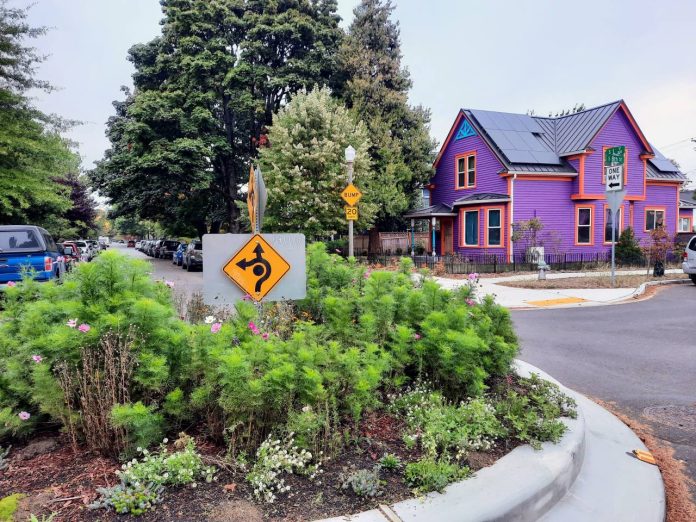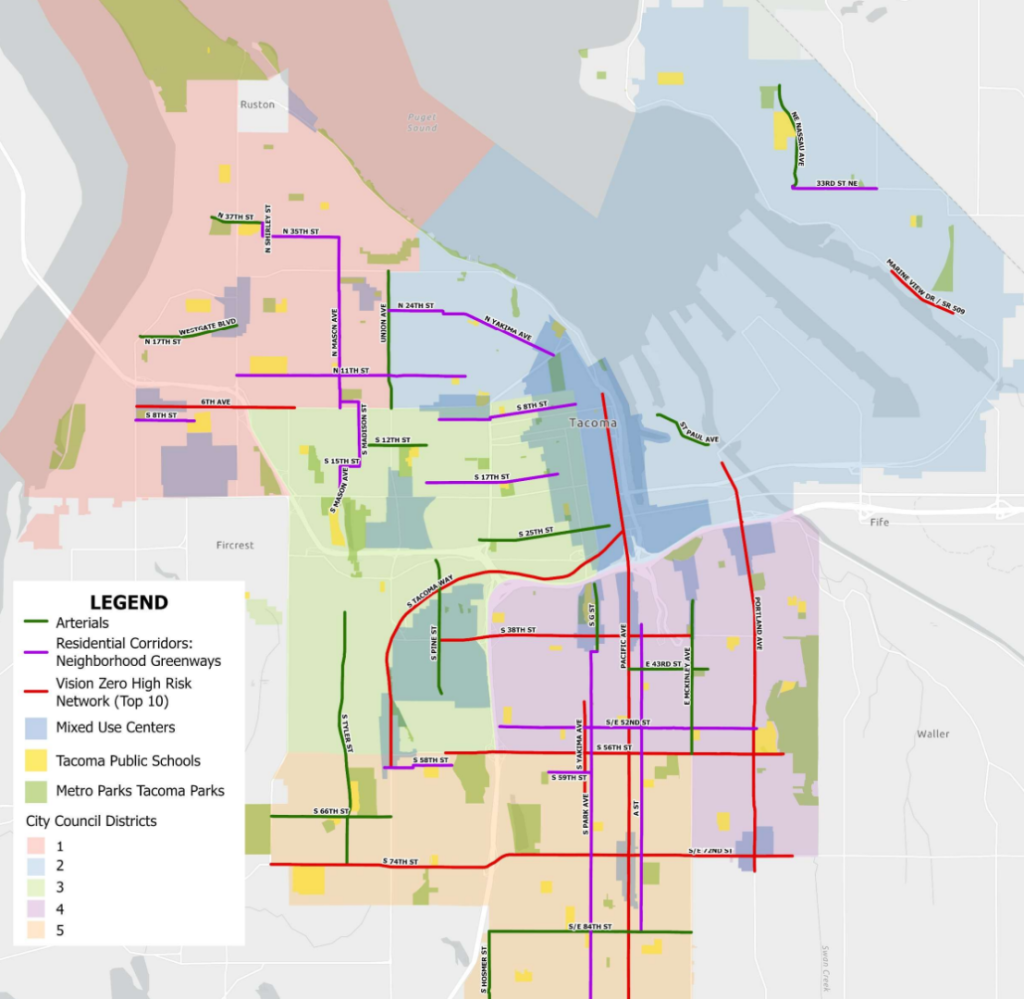
The Tacoma Streets Initiative II was pitched as a transformative package to accelerate safe streets investments in the Grit City, but voters balked at the levy’s price tag. Early returns indicate a close result, but backers have conceded defeat as the remaining ballots to count have dwindled and a five-point gap remains.
As of Wednesday’s ballot count, 52% of the vote was against the levy. Turnout was sitting under 25%, with just over 34,000 total votes on the measure. Only a few hundred votes remained to be tallied, according to Pierce County estimates. Had the levy passed, Tacoma’s goal was to repave 223 miles of streets, improve between 130 and 170 miles of bike infrastructure, and upgrade 250 to 300 miles of sidewalks over the first 15 years of the new initiative.
The City of Tacoma issued a statement Wednesday warning of the consequences of failing to replace the levy funding and pledging a second effort.
“Although the votes have not yet been certified, the City of Tacoma acknowledges that Proposition 1, the ballot initiative aimed at funding crucial public infrastructure projects, will most likely not pass,” the City said. “Our primary concern now is that, without these dedicated funds, we will struggle to keep up with the infrastructure needs of our city and maintain the improvements achieved under the current Streets Initiative, which ends December 2025. Looking ahead, we anticipate that the level of service residents rely on will unfortunately be diminished over time as maintaining and upgrading our infrastructure becomes increasingly more challenging.”

The city’s statement acknowledged that strained household budgets and financial anxiety could have created a headwinds for the levy.
“This measure represented a significant opportunity to continue investing in the essential systems that support our community’s quality of life, safety, and future economic growth,” the City’s statement continued. “Despite this setback, the City remains committed to addressing Tacoma’s infrastructure requirements. The City Council will be actively exploring all available options moving forward, including the possibility of bringing a revised funding measure back to the voters for consideration at an appropriate time in the future.”
Streets Initiative II would have been funded by a 0.5% increase in the city’s utility taxes and a property tax increase of 5 cents per $1,000 of assessed value. It was expected to raise $25 million in its first year and ramp up over time, providing a new baseline level of funding for the City of Tacoma to maintain and modernize its streets, pushing back against a growing maintenance backlog. While Streets Initiative I was term-limited to a decade, the new measure would be set to continue indefinitely to meet the needs of a city expecting to add more than 100,000 new residents in the next two decades.
Figuring out a plan B for transportation funding will likely be one of Tacoma Mayor Victroria Woodards’ last major tasks to deal with, as she wraps up the end of her second and final term, thanks to term limits. Councilmember John Hines, one of Streets Initiative II’s biggest champions, is among the candidates vying to replace Woodards.
Tacoma voters failing to back a transportation funding measure could also bode poorly for the prospect of other potential ballot measures on the horizon in Pierce County. Pierce Transit’s sales tax authority significantly lags behind other regional peers, and transit advocates have long been advocating for a transit-funding measure after a 2012 vote failed by a mere 915 votes.

Laura Svancarek, executive director of Downtown On The Go, told The Urbanist that “at this point, I think it’s mathematically impossible for SI2 to pull ahead.” A transportation-focused nonprofit, Downtown On The Go led the coalition backing the streets initiative.
“We’re very disappointed with the result,” Svancarek said. “Streets Initiative 2 would have provided transformational funding to address Tacoma’s most dangerous roadways while increasing neighborhood connectivity, and SI2 not passing has significant consequences. The loss of new funding for safety projects is disheartening, but the problems extend beyond that. Streets Initiative 1 expires at the end of 2025 regardless of these results, meaning that Public Works will see a notable decrease in dollars for needed maintenance and planned projects beginning in January.”
The initiative plan would have tackled some of the most dangerous corridors for people who walk and bike, hotspots identified in Tacoma’s 2022 Vision Zero Action Plan, such as Portland Avenue, S Tacoma Way, and S 74th Street. That would have jumpstarted progress after the City opted to slash most of its Vision Zero budget for 2025. Councilmember Kristina Walker was able to partially staunch the bleeding by adding back $1 million specifically for safety projects, but it was really the levy project that would have driven the safety action plan. Walker was executive director of Downtown On The Go from 2011 to 2020, before she ran for office and has made transportation issues a priority.
Tacoma has streets that are significantly more deadly than many of its neighbors. Grit City had 35 fatal crashes in 2023, compared to 27 for Seattle, despite Seattle’s population being more than three times larger. On a per capita basis, Tacoma streets are about 4.5 times more deadly than Seattle’s. In 2020, Tacoma adopted a Vision Zero pledge to end traffic deaths by 2035, hoping to reverse its troubling trend.
Downtown On The Go has pledged to fight for safe streets projects and seek ways to mitigate the lost streets funding.
“When budgets get tight, it’s active transportation, safety, and access projects face the brunt of delays and cancellations,” Svancarek said. “Downtown On the Go will continue to advocate for safe mobility for all Tacomans.”
The group has bike advocacy events planned in May for bike month. “On April 29, Tacoma City Council will declare May as Bike Month in Tacoma. Downtown On the Go and 2nd Cycle Community Bike Shop invite advocates to speak up for biking at the council meeting,” Svancarek added. “It’s more important than ever for our elected leaders to understand the importance of investing in safe bike infrastructure.”
Doug Trumm is publisher of The Urbanist. An Urbanist writer since 2015, he dreams of pedestrian streets, bus lanes, and a mass-timber building spree to end our housing crisis. He graduated from the Evans School of Public Policy and Governance at the University of Washington in 2019. He lives in Seattle's Fremont neighborhood and loves to explore the city by foot and by bike.


